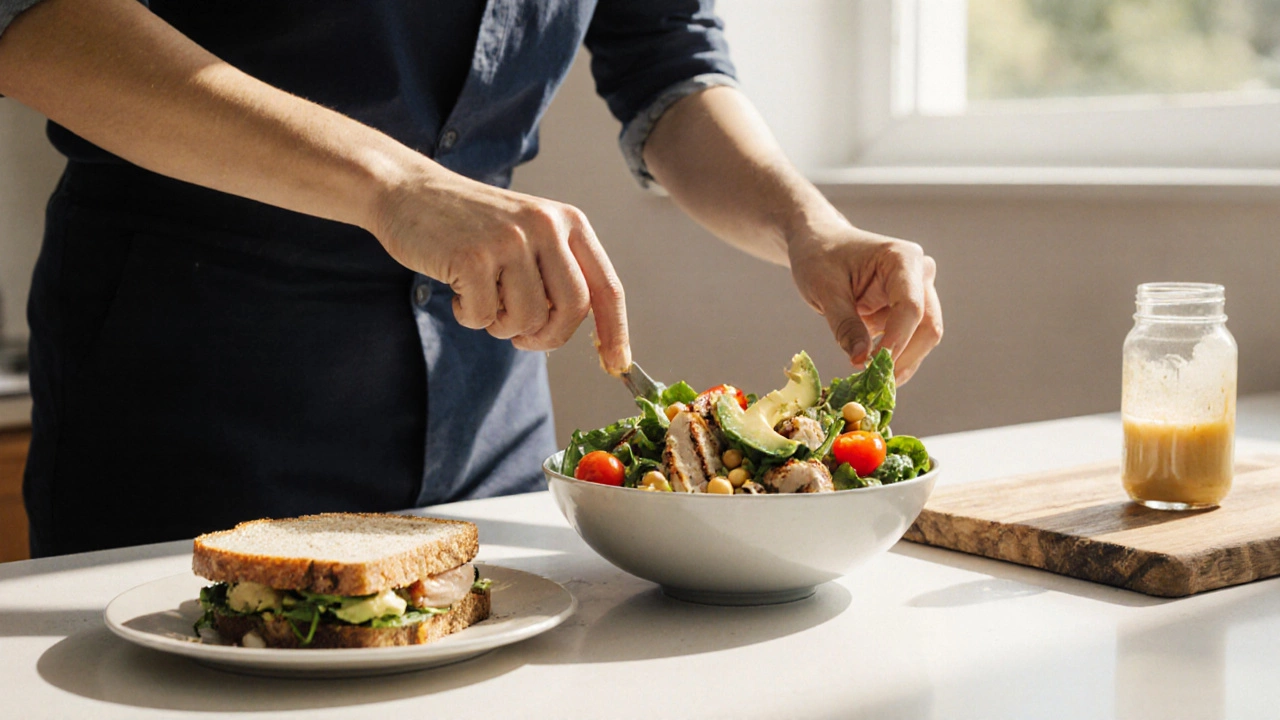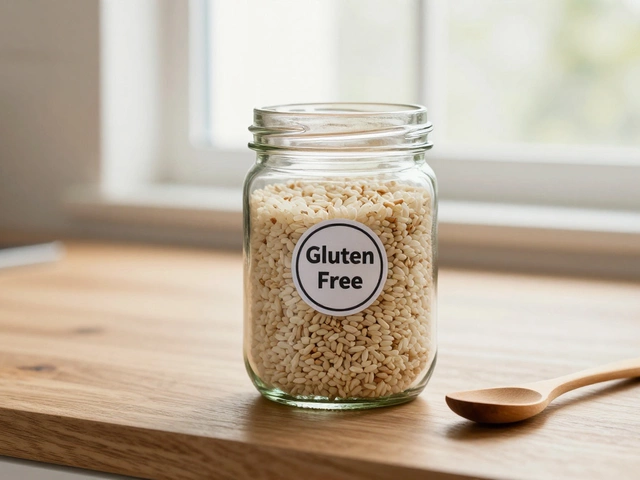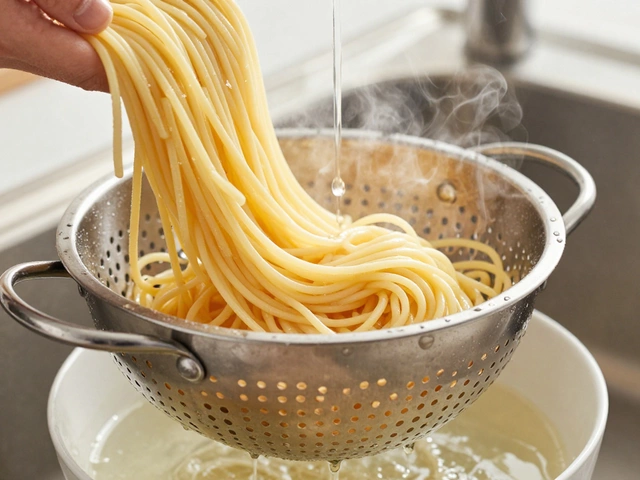Lunch Alternative Finder
Find Your Perfect Lunch Alternative
Discover quick and nutritious lunch options that replace sandwiches based on your preferences.
Selected criteria:
Quick Takeaways
- Swap bread for bowls, wraps, or bento‑style boxes to keep lunch exciting.
- Most alternatives need 10minutes or less of prep and can be made ahead.
- Focus on protein, fiber, and healthy fats to stay full until dinner.
- Use pantry staples - rice, beans, canned tuna - for low‑cost meals.
- Customize each idea with seasonal veggies and your favorite sauces.
When the midday grind hits, many of us reach for a sandwich out of habit. But the same two slices of bread can become boring fast, and they don’t always give the nutrition balance we need. If you’re wondering "What can I eat for lunch instead of sandwiches?", the answer is a whole menu of fresh, tasty, and quick alternatives that fit into a busy schedule.
Enter Lunch alternatives - a collection of meals that replace the classic sandwich with bowls, wraps, soups, and more. These options are built around protein, whole grains, and vegetables, giving you steady energy without the midday slump. Below you’ll find a step‑by‑step guide, real‑world examples, and a handy comparison table to help you choose the perfect replacement for any sandwich craving.
Why Move Beyond the Everyday Sandwich?
- Nutrition gaps: Bread often spikes blood sugar, especially refined white varieties.
- Flavor fatigue: Same combination of meat, cheese, and lettuce can get stale quickly.
- Portability limits: Wet ingredients make a sandwich soggy after a few hours.
- Allergy & dietary needs: Gluten‑free, low‑carb, or vegan diners need alternatives.
By swapping the bread base for a container that holds grains, legumes, or protein‑rich foods, you get a balanced macro profile and a chance to experiment with world flavors.
Salad Bowl Basics
Salad bowls are essentially de‑constructed sandwiches - you get the greens, protein, and crunch without the carbs. Start with a base, add protein, then load up on veggies and finish with a drizzle.
Salad bowl is a fiber‑rich meal built around leafy greens, topped with protein and a flavorful dressing. A typical combo might be mixed spinach, roasted chickpeas, grilled chicken, sliced avocado, cherry tomatoes, and a lemon‑tahini sauce.
- Prep time: 10minutes (if you pre‑cook protein in bulk).
- Portability: Store dressing separately, assemble at work.
- Carb count: Low to moderate, depending on added grains.
Grain Bowl Variations
Grain bowls swap the leafy base for whole grains like quinoa, brown rice, or farro. They’re hearty, filling, and perfect for colder days.
Grain bowl is a nutrient‑dense dish featuring a cooked grain base, protein, vegetables, and a sauce. Try a Mediterranean quinoa bowl with cucumber, olives, feta, and a drizzle of olive oil and lemon. For a heartier vibe, use brown rice, black beans, corn, salsa, and grilled steak strips.
- Prep time: 15minutes (cook grain ahead of time).
- Portability: Keeps well cold or at room temperature.
- Protein boost: Add beans, tofu, or lean meat.
Wrap It Up
Wraps give you the hand‑held convenience of a sandwich but let you swap the bread for a low‑carb tortilla or lettuce leaf.
Wrap is a rolled tortilla or leafy leaf filled with protein, vegetables, and sauce. A quick Asian‑inspired wrap uses a whole‑wheat tortilla, shredded cabbage, cooked shrimp, carrots, and a hoisin‑peanut sauce.
- Prep time: 5minutes if using pre‑cooked ingredients.
- Low‑carb option: Use large lettuce leaves instead of tortillas.
- Versatility: Breakfast wraps, taco wraps, or Greek wraps.
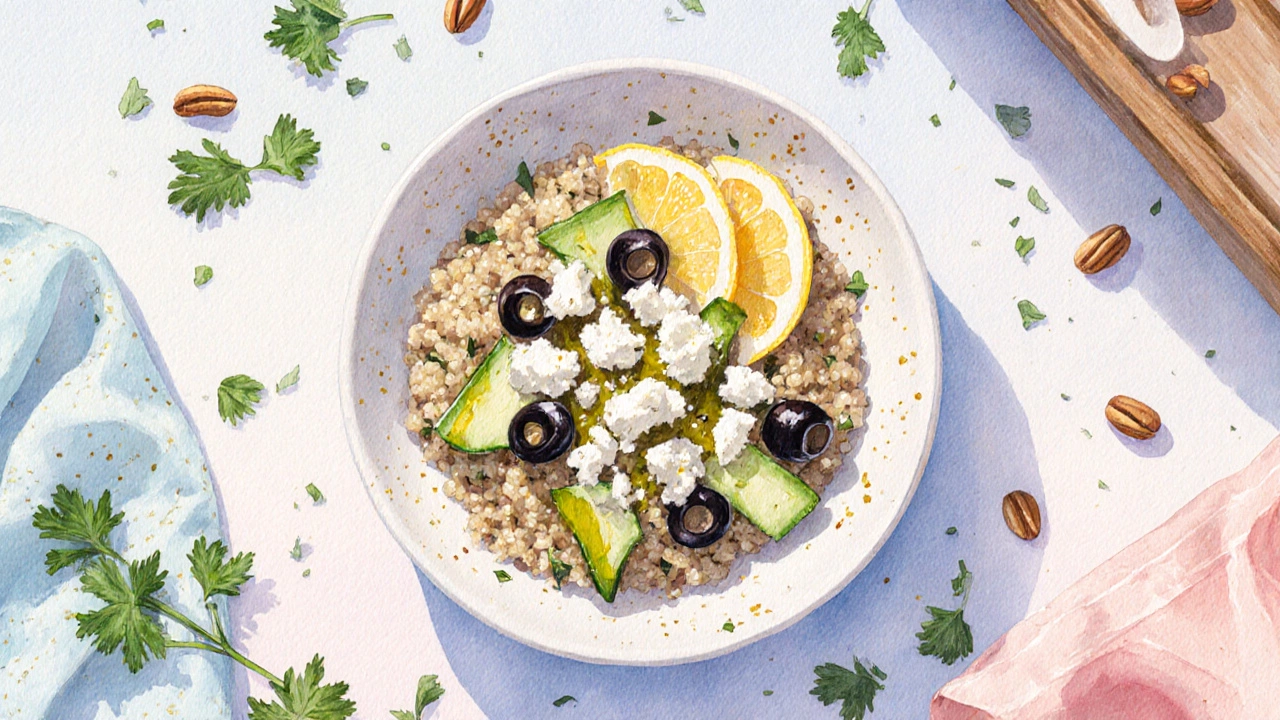
Soups for the Lunch Desk
Soup might sound like a dinner option, but a well‑chosen broth can be light enough for lunch and comforting enough to keep you satisfied.
Soup is a liquid‑based dish that can be packed with vegetables, protein, and whole grains. A split‑pea and ham soup, a quick miso broth with tofu and seaweed, or a roasted red‑pepper bisque all make great lunch companions.
- Prep time: 5‑10minutes if using canned or pre‑made stock.
- Portability: Insulated thermos keeps it hot for hours.
- Fullness factor: High water content helps control appetite.
Bento Box Inspiration
Bento boxes aren’t just for Japanese cuisine; they’re a smart way to portion a variety of foods without mixing flavors.
Bento box is a compartmentalized container that lets you combine protein, carbs, and veggies in one meal. Fill one compartment with edamame, another with brown rice, a third with teriyaki chicken bites, and a small section with fresh fruit.
- Prep time: 10‑15minutes (cook components in bulk).
- Visual appeal: Colorful sections make the meal more inviting.
- Customizable: Swap in beans for meat, use quinoa instead of rice.
Egg‑Based Lunches
Eggs are a quick protein punch, and they can be turned into frittatas, egg‑muffins, or even a savory avocado‑egg toast (using a gluten‑free base).
Egg‑based lunch includes dishes where eggs serve as the main protein, often combined with vegetables and cheese. A 5‑minute microwave egg cup with spinach, feta, and cherry tomatoes is perfect when you’re short on time.
- Prep time: 5minutes.
- Portability: Pack in a reusable container; eat warm or cold.
- Low‑carb friendly: No bread needed.
Protein‑Packed Snacks
Sometimes you just need a bite‑size solution. Think Greek yogurt with nuts, a handful of roasted chickpeas, or a cheese‑and‑turkey roll‑up.
Protein snack is a small, nutrient‑dense portion designed to keep hunger at bay until the next meal. Pair a 100‑gram portion of cottage cheese with sliced cucumber and a sprinkle of paprika for a savory, filling snack.
- Prep time: Under 2minutes.
- Storage: Keeps in the fridge for a day.
- Convenient: Perfect for desk drawers or lunch bags.
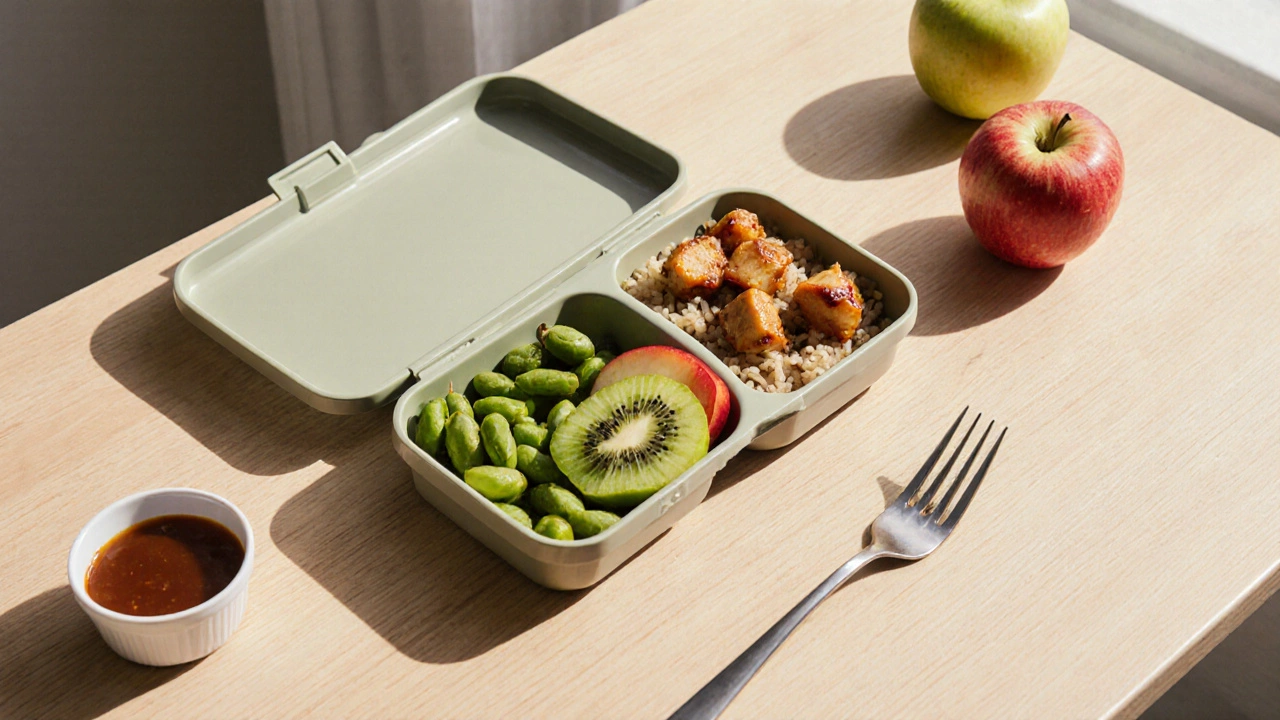
How to Prep Fast: A Mini‑Workflow
- Pick a base (greens, grain, or wrap) on Sunday.
- Cook protein in bulk - grilled chicken, baked tofu, boiled eggs.
- Chop veggies and store them in airtight containers.
- Prepare sauces (vinaigrette, tahini, yogurt‑herb) in small jars.
- Assemble each morning or night before; keep dressing separate for crunch.
Following this simple loop cuts daily prep to under five minutes and eliminates the “what’s for lunch?” scramble.
Shopping List Cheat Sheet
- Greens: spinach, kale, mixed salad leaves.
- Grains: quinoa, brown rice, farro.
- Proteins: chicken breast, canned tuna, firm tofu, boiled eggs.
- Veggies: bell peppers, carrots, cucumber, cherry tomatoes.
- Pantry: hummus, olive oil, nuts, seeds, low‑sodium broth.
- Condiments: mustard, soy sauce, lemon, herbs.
Quick Comparison of Popular Lunch Alternatives
| Option | Prep Time | Carbs (g) | Protein (g) | Portability |
|---|---|---|---|---|
| Salad Bowl | 10min | 12‑20 | 20‑30 | High (keep dressing separate) |
| Grain Bowl | 15min | 30‑45 | 25‑35 | High |
| Wrap | 5min | 15‑25 | 15‑25 | Very High |
| Soup (thermos) | 5‑10min | 10‑20 | 15‑25 | Medium (requires thermos) |
| Bento Box | 10‑15min | 20‑35 | 20‑40 | Very High |
Pro Tips & Common Pitfalls
- Tip: Use a small container for sauces to avoid soggy veggies.
- Tip: Rotate your proteins weekly - chicken, beans, tuna, tempeh - to keep meals exciting.
- Pitfall: Forgetting to season the grain can lead to bland bowls. Add a pinch of salt, pepper, and herbs while cooking.
- Pitfall: Over‑packing a lunch box can make it hard to close. Keep the total volume under 700ml for a standard tote.
Frequently Asked Questions
Can I make these lunch alternatives gluten‑free?
Absolutely. Choose gluten‑free grains like quinoa or rice, use corn or rice tortillas for wraps, and skip any bread‑based sauces. Most of the ingredients listed are naturally gluten‑free.
How long can I store a prepared lunch bowl?
In a sealed container, salads stay fresh for 3‑4 days if you keep dressings separate. Grain bowls can last up to 5 days, especially if the grain is cooled quickly after cooking.
What’s the cheapest lunch alternative?
A simple bean salad - canned black beans, chopped tomato, corn, a splash of lime, and olive oil - costs under $1 per serving and packs a solid protein punch.
Do I need fancy containers for bento boxes?
Not at all. Any lunchbox with separate compartments works. Plastic, stainless steel, or even a reusable silicone bag will do the job.
Can I prepare these meals ahead for the whole week?
Yes. Cook grains and proteins in bulk on Sunday, chop veggies, portion sauces, and assemble each day in the morning or the night before. This batch approach saves time and cuts waste.
Switching from a sandwich to any of these alternatives gives you variety, better nutrition, and the confidence that your lunch will keep you going until dinner. Pick the style that matches your taste, prep schedule, and dietary needs, and you’ll never look back at that boring bread slice again.
